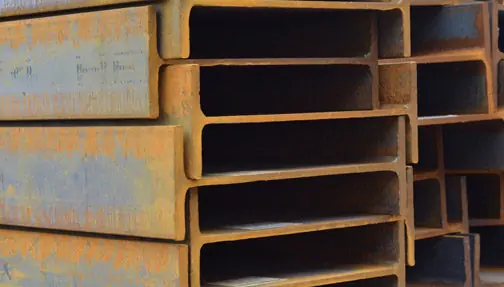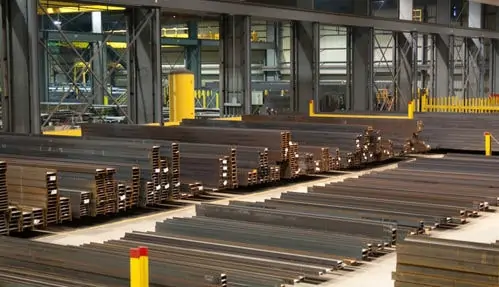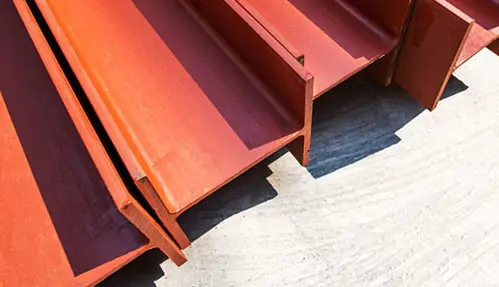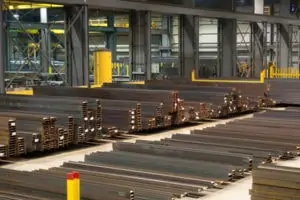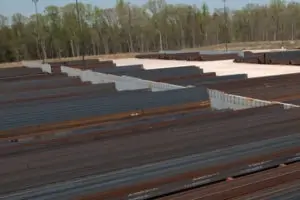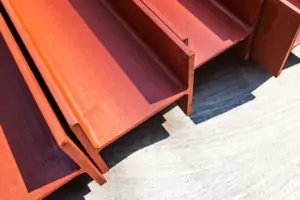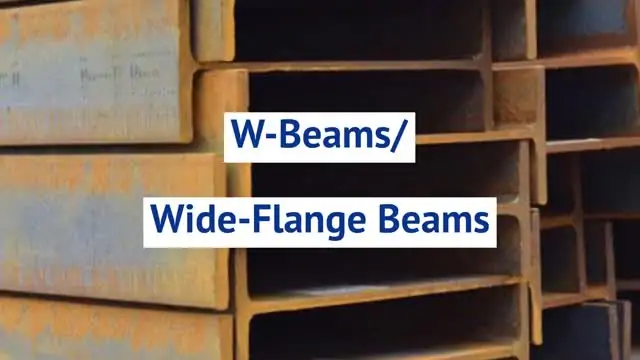W-Beams | Structural Steel Wide Flange Beams
W-beams, or wide flange beams, are stout, sturdy beams with wide flanges that are positioned perpendicularly to the web of the material giving them their characteristic shape and distinguishing them from I-beams. They’re frequently used as reinforcements in bridges, commercial buildings, and residential structures and can be fabricated from wood, aluminum, steel, or composite materials. Because of the wide flanges on the top and bottom, builders can more easily distribute heavy weight along the top of the beams without putting too much stress on the supports directly below. Along with offering superior weight distribution capabilities, they also have a better strength-to-weight ratio than square beams.
Common Industry Applications
Builders use W-beams throughout the construction industry to build a wide array of different residential, commercial, and municipal structures. Some of the most common uses include:
- Building homes
- Creating stronger commercial buildings, including skyscrapers or buildings with unique architectural designs
- Freeways
- Overpasses
How to Identify Wide Flange Beam Sizes
To best meet the needs of different construction projects that have to accommodate a wide range of weights, W-beam steel mills produce multiple different types of W-beams with different dimensions, material options, and reinforcement elements. The dimensions of a given W-beam largely determine the amount of weight the beam can support. There are four key dimensions of W-beams to account for:
- Height: This measurement is the entire height of the beam, from the outer surface of the top flange to the outer surface of the bottom flange.
- Flange Width: This dimension establishes the width of the flange, from the left to the right of its cross-section. W-beam flanges have the same width.
- Flange Thickness: This is the thickness of the flange from the top surface to the bottom surface. The left and right sides of both flanges should have the same thickness.
- Web Thickness: The “web” refers to the vertical stem or main body of the beam. This dimension is the thickness across the web from left to right.
Once you determine your dimensions based on the requirements of your specific construction project (including both linear requirements and weight-bearing requirements), you can shop for the right W-beams by using steel service center catalogs and engineering guides to find the specific W-beam with your specific dimensions. The American Institute of Steel Construction (AISC) can guide you through the standardized beam sizes. This allows engineers, architects, and builders to communicate easily across industries and coordinate orders with minimal risk of error.
ASTM Specifications
The American Society for Testing and Materials (ASTM) International and American National Standards Institute (ANSI) organizations have developed standards that guide the establishment of universal sizes for W-beams and more. Some important standards for W-beams are:
ASTM A36
This standard applies to materials for bolted, riveted, and welded components of bridges and buildings. It primarily guides the size distinctions for carbon steel beams.
ASTM A709
This standard applies to bridge components such as bars and other shapes constructed from carbon alloys and other popular high-strength alloys. ASTM A709 steels are highly corrosion resistant and can withstand extreme outdoor conditions, making them ideal for outdoor infrastructure.
ASTM A572
This specification encompasses five grades of high-strength steel. It establishes requirements for buildings and structures with bolted, riveted, or welding components made from structural steel beams like Columbium-Vanadium steel.
ASTM A992
This standard covers components used in building frames, structures, and bridges, especially rolled steel structural components. This steel is comprised of a mixture of elements, including chrome, copper, vanadium, molybdenum, and nickel.
ASTM A588
This standard covers the requirements for high-strength, low-alloy steels used for structures. ASTM A588 is ideal for applications that prioritize weight savings and atmospheric corrosion resistance standards.
Wide Flange Beams for Your Next Project
Choosing the right wide flange beams for your next project is essential for complying with industry standards and creating cost-effective, safe infrastructure. Contact Infra-Metals today to learn more about our inventory or browse our catalog to find the beams you need.
View Catalog

